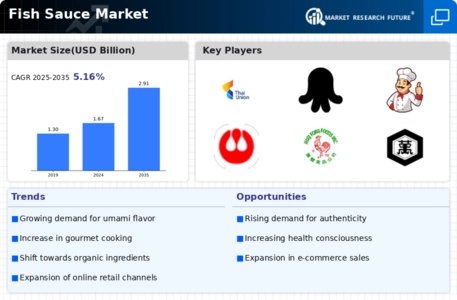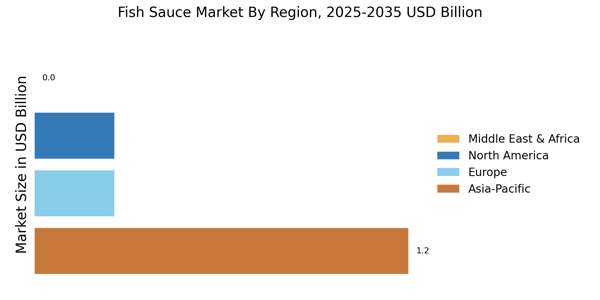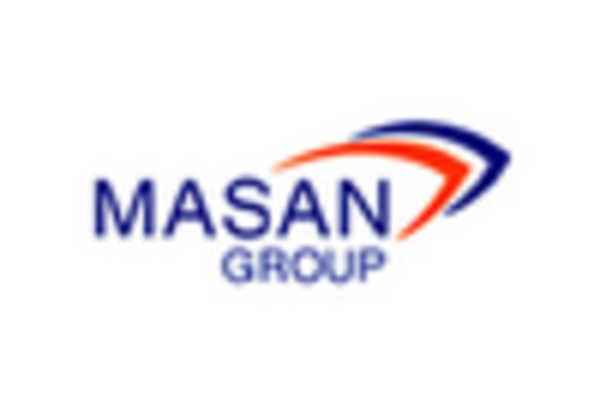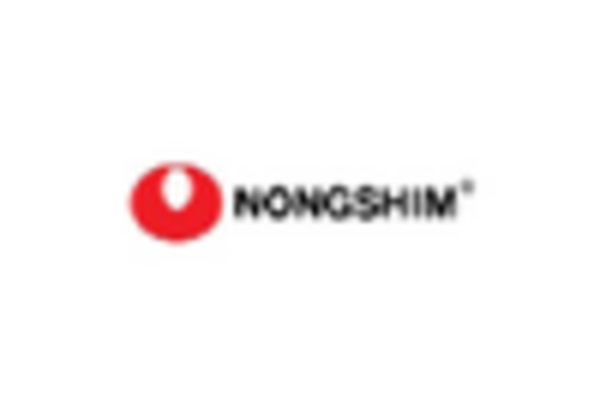Innovation in Product Offerings
The Fish Sauce Market is experiencing a wave of innovation as manufacturers seek to differentiate their products in a competitive landscape. This includes the introduction of new flavors, organic options, and unique packaging solutions that appeal to modern consumers. As the market evolves, brands are increasingly focusing on sustainability and ethical sourcing, which resonate with environmentally conscious consumers. Recent market analysis indicates that innovative product offerings are likely to capture a larger share of the market, as consumers are drawn to brands that align with their values. This emphasis on innovation not only enhances consumer choice but also drives growth within the fish sauce sector, positioning it for continued success in the future.
Culinary Trends and Global Cuisine
The Fish Sauce Market is experiencing a notable surge in demand driven by the increasing popularity of Asian cuisines across various regions. As culinary trends evolve, consumers are becoming more adventurous, seeking authentic flavors that fish sauce provides. This shift is evident in the growing number of restaurants and food establishments incorporating fish sauce into their dishes, enhancing the overall dining experience. According to recent data, the market for fish sauce is projected to grow at a compound annual growth rate of approximately 5% over the next few years. This trend indicates a robust interest in diverse culinary experiences, positioning fish sauce as a staple ingredient in both home cooking and professional kitchens.
Cultural Exchange and Globalization
The Fish Sauce Market is influenced by the ongoing cultural exchange and globalization, which facilitate the spread of culinary traditions across borders. As people travel and migrate, they bring their culinary practices with them, leading to an increased appreciation for traditional ingredients like fish sauce. This cultural diffusion is evident in the rising popularity of fusion cuisines that incorporate fish sauce into diverse dishes, appealing to a broader audience. Market data suggests that regions previously less familiar with fish sauce are now embracing it, contributing to a more diverse consumer base. This trend indicates a promising future for the fish sauce market as it continues to adapt to changing consumer preferences.
E-commerce Growth and Online Retailing
The Fish Sauce Market is benefiting from the rapid expansion of e-commerce platforms, which have transformed the way consumers purchase food products. Online retailing offers convenience and accessibility, allowing consumers to explore a wider variety of fish sauce brands and types than ever before. This trend is particularly pronounced among younger consumers who prefer the ease of online shopping. Recent statistics indicate that online sales of food products, including fish sauce, have seen a substantial increase, with projections suggesting that this segment could account for a significant portion of total sales in the coming years. As e-commerce continues to grow, fish sauce brands are likely to invest in digital marketing strategies to capture this expanding market.
Health Consciousness and Natural Ingredients
The Fish Sauce Market is witnessing a shift towards health-conscious consumption patterns, with consumers increasingly favoring natural and minimally processed ingredients. Fish sauce, often perceived as a healthier alternative to artificial flavor enhancers, aligns well with this trend. The demand for products that are free from preservatives and artificial additives is on the rise, as consumers become more aware of the impact of their dietary choices on overall health. This inclination towards natural ingredients is likely to drive innovation within the fish sauce sector, as manufacturers explore new formulations that cater to health-conscious consumers. The market data suggests that this trend could lead to a significant increase in sales for brands that emphasize quality and authenticity.


















Leave a Comment